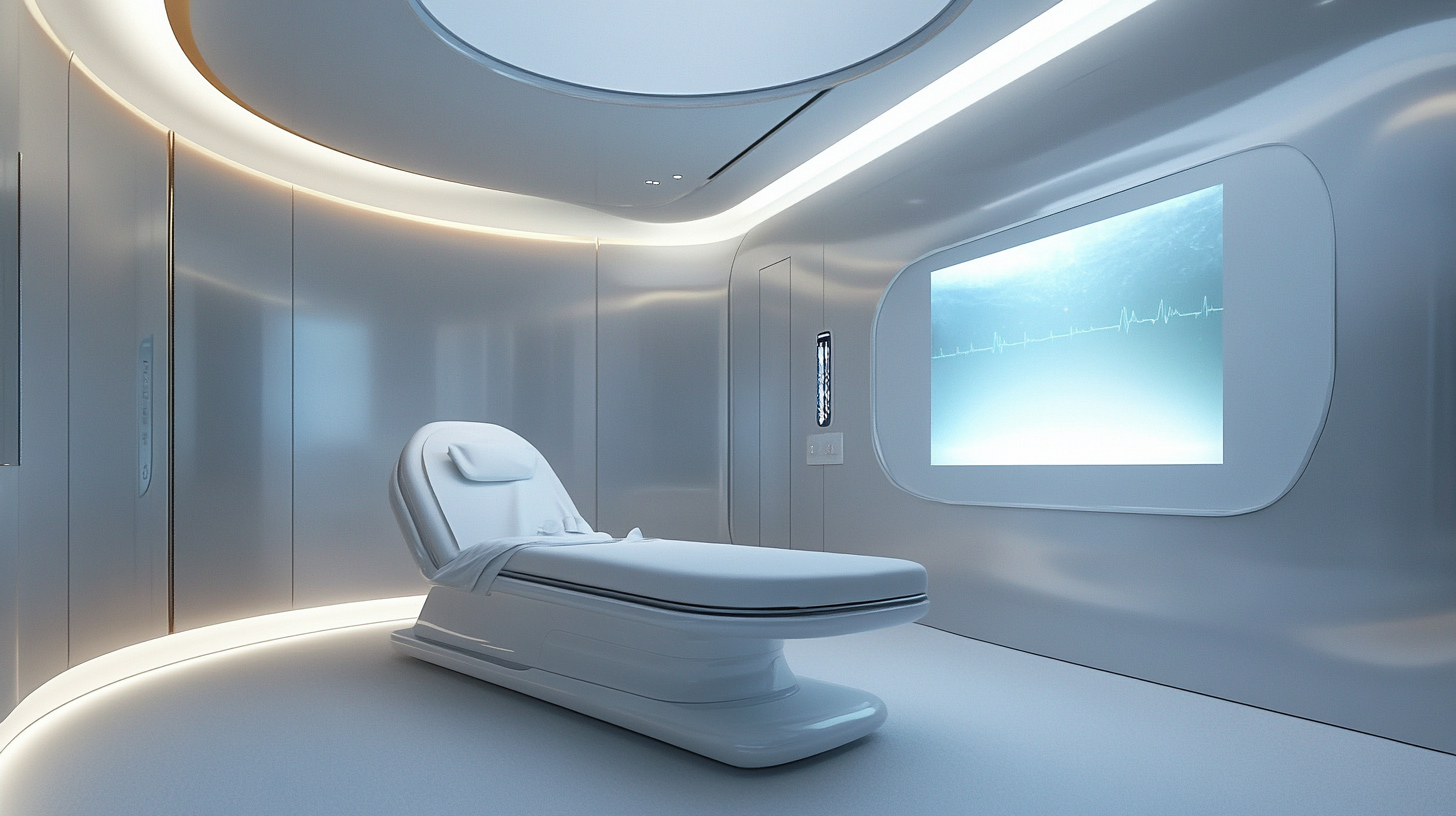Future Innovations in Medical Device Development and Strategies for Global Buyers
You know, the whole landscape of developing medical devices is shifting pretty fast these days. It’s all because of new tech and the ever-growing demands in healthcare. In fact, if you check out the Global Medical Device Market report from Grand View Research, you'll see that this industry is on track to hit a whopping USD 512.3 billion by 2027, with a growth rate of about 5.4% per year. That's pretty impressive! It really highlights just how crucial it is for us to come up with innovative solutions—devices that don’t just tackle today’s healthcare challenges, but also get a jump on what we’ll need in the future. So, it's becoming super important to integrate smart tech like AI and IoT into these devices. That way, we can really boost patient outcomes and make healthcare processes more efficient.
For folks looking to buy in this fast-paced market, figuring out the ins and outs of effective medical device development is key. With regulations getting trickier, supply chain issues cropping up, and everyone needing cost-effective solutions, being well-informed goes a long way toward making smart procurement decisions. Reports suggest that buyers should really concentrate on forming partnerships with manufacturers who are all about innovation and compliance. As we dive into future innovations in this space, it’s essential to look at the trends and strategies that are going to shape the next generation of medical devices, making sure they tackle upcoming health issues as well as market needs.

Emerging Technologies Transforming Medical Device Design and Functionality
You know, it’s pretty wild how emerging technologies are shaking up the whole medical device scene. Seriously, with the rise of artificial intelligence (AI) and machine learning, we're seeing some really smart and efficient gadgets coming to life. Take Siemens, for example; they just rolled out their Catapult™ AI NN software. It’s like they’ve found a way to supercharge chip-level systems to make designing neural network accelerators a breeze. These breakthroughs aren’t just boosting performance—they're also speeding up how quickly new devices hit the market, which is fantastic news for patient care. And speaking of big developments, the recently released 2024 Medical Device and Supply Chain Annual Innovation White Paper really dives into some important pathways that industry leaders are considering to tackle challenges and spark growth. One key point is that collaboration is absolutely essential. Manufacturers, regulators, and tech developers need to come together, especially now as the industry is consolidating. When everyone communicates openly and teams up, we can tap into shared knowledge and resources to push medical technology to new heights. Plus, there's a real push for homegrown innovation in high-end medical devices, as pointed out by Professor Fan Yubo. He's really emphasizing how critical it is for local companies to break through those pesky innovation bottlenecks. The government’s recent policies are backing this up, showing a strong commitment to creating a quality-driven healthcare system that boosts investment in R&D. As global buyers try to make sense of this fast-changing landscape, staying on top of these innovations and embracing forward-looking strategies will be key to thriving in this field.

Key Considerations for Global Buyers in the Medical Device Market
In the rapidly evolving landscape of medical device development, global buyers must equip themselves with critical insights to navigate this complex market effectively. One of the paramount considerations is regulatory compliance. Different regions enforce varying standards—from the FDA in the United States to the CE marking requirements in Europe. Understanding the regulatory environment is crucial for buyers to ensure that the devices they procure comply with local laws, thereby avoiding costly legal issues and product recalls.
Another critical consideration is the assessment of innovation and technology. As advancements in telemedicine, wearables, and AI continue to reshape the medical device industry, buyers should look for manufacturers that prioritize research and development. It’s essential to evaluate how well a product aligns with current technological trends and addresses ongoing healthcare challenges. By partnering with innovators, buyers can ensure they are investing in devices that not only meet today’s needs but are also scalable for future advancements.
Moreover, supply chain reliability is a vital aspect that global buyers cannot overlook. The COVID-19 pandemic has showcased the fragility of supply chains in the medical sector. Buyers should assess the transparency and resilience of the vendors' supply chains to mitigate risks associated with shortages or delivery delays. Engaging with suppliers who have robust contingency planning and ethical sourcing practices will ultimately lead to more sustainable procurement decisions.

Navigating Regulatory Challenges in International Medical Device Trade
Alright, let's talk about navigating the sometimes tricky world of international medical device trade. It’s not just about shipping stuff around; you've really got to know the regulatory scene, which can look pretty different depending on where you are. If you're a global buyer, you've got to get familiar with the standards laid out by organizations like the FDA in the U.S. or the European Medicines Agency (EMA) in Europe, along with other international regulatory bodies that play a part. Each market comes with its own set of rules—think pre-market approvals, clinical evaluations, and those pesky post-market surveillance requirements. Understanding all of this stuff can help you breeze through getting into international markets and also save you from running into expensive compliance headaches later on.
But hold on, it’s not just about the regulations. It’s super important for global buyers to get involved with stakeholders and tap into resources from trade associations and regulatory groups. These organizations often share really useful insights and updates on any changes in regulations—it's a good way to stay on top of everything. Plus, teaming up with local distributors or compliance experts can be a game-changer, giving you that extra support and knowledge you need. This way, your medical devices won't just meet the legal requirements—they’ll also fit right into what the market expects. So, if you approach regulatory navigation with a proactive mindset, you'll set yourself up for success in the competitive medical device trade world.

Sustainability and Ethical Practices in Future Medical Device Development
You know, the future of developing medical devices is really gearing up to be more about sustainability and ethical practices. It’s pretty clear that there's this growing urgency for innovations that take the environment into account. So, it’s essential for manufacturers and buyers around the world to start making sustainable materials and processes a big part of their game plan. This shift not only tackles those ecological issues but also meets the changing demands of a market that wants products contributing positively to society.
Take Dr. Bryan Ritchie, for example—the CEO of SIMBA Chain. He’s a great illustration of the entrepreneurial energy pushing these changes forward. He’s all about those groundbreaking technologies, and he really highlights how crucial originality and clever ideas are when it comes to creating solutions that work well and are also ethically sound. And as the medical field dives into using artificial intelligence and other high-tech goodies, we have to be mindful of the ethical puzzles that can pop up, especially regarding who’s responsible when something goes wrong. So, finding a way to mesh innovative techniques with solid ethical guidelines is going to be key to building trust and achieving better outcomes for patients down the line.
Also, it’s important for companies in the medical device space to really adopt frameworks that encourage ethical decision-making at every stage—from brainstorming those initial ideas to getting things off the ground. Teaming up with stakeholders like healthcare professionals and regulatory bodies is going to be super important for creating a balanced approach that still promotes innovation while staying responsible. After all, as global buyers look to link up with sustainable manufacturers, following ethical practices is going to shape not just the credibility but also the success of medical devices out there in the market.
Innovative Partnerships: Collaborating for Success in Medical Device Procurement
You know, in today’s fast-paced healthcare scene, teaming up with others is becoming super important if you want to get ahead in the game of medical device procurement. Joining forces with stakeholders like manufacturers, research centers, and healthcare providers can really speed up how we develop and distribute medical technologies. These collaborations can open up new insights and share valuable resources, allowing us to create cutting-edge devices that cater to the wide-ranging needs of patients and healthcare systems all over the world.
And let’s not forget, these partnerships can really boost supply chain resilience. When buyers work with a variety of partners, they can mix things up and reduce the risks tied to relying on a single source. This teamwork helps procurement teams stay agile, adjusting to changes in market trends or new tech, which means we keep that flow of innovative medical devices going – and that ultimately helps both healthcare providers and patients.
Also, getting into strategic partnerships promotes a vibe of continuous improvement and sharing knowledge. By doing things like joint ventures and alliances, organizations can tap into each other’s expertise, speeding up research and development. This kind of collaboration doesn't just spark innovation; it also helps us make headway on regulatory compliance, making it easier to bring essential medical devices to market. So, by putting collaboration at the forefront, everyone in the medical device industry can help shape a future where advanced healthcare solutions are more accessible worldwide.
